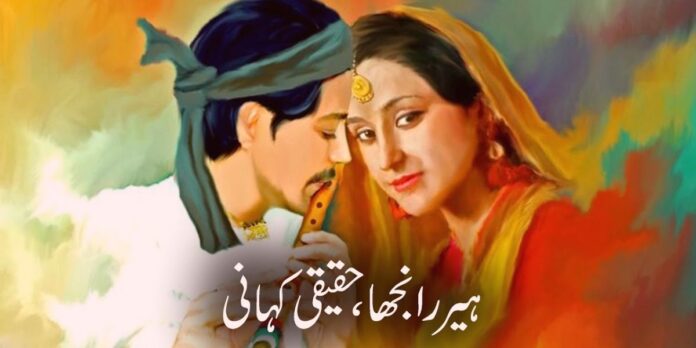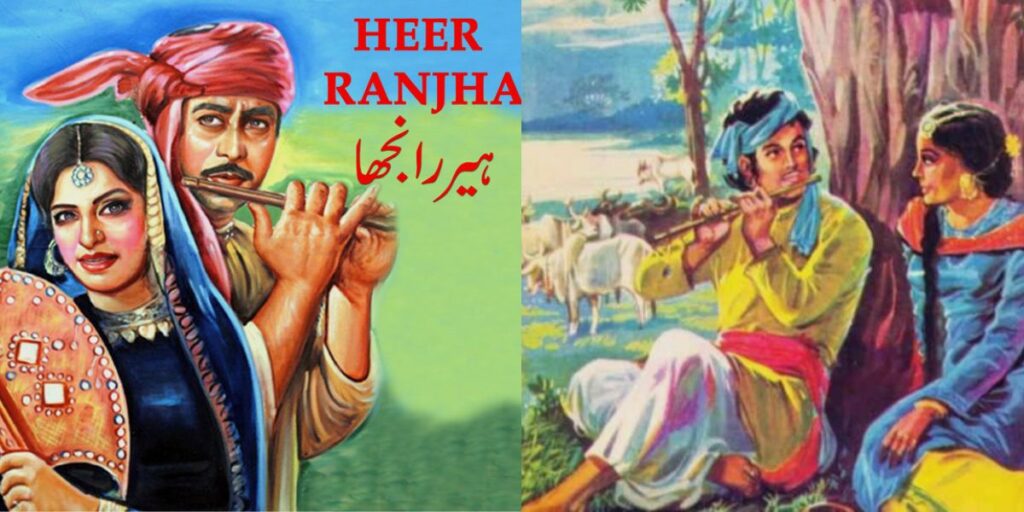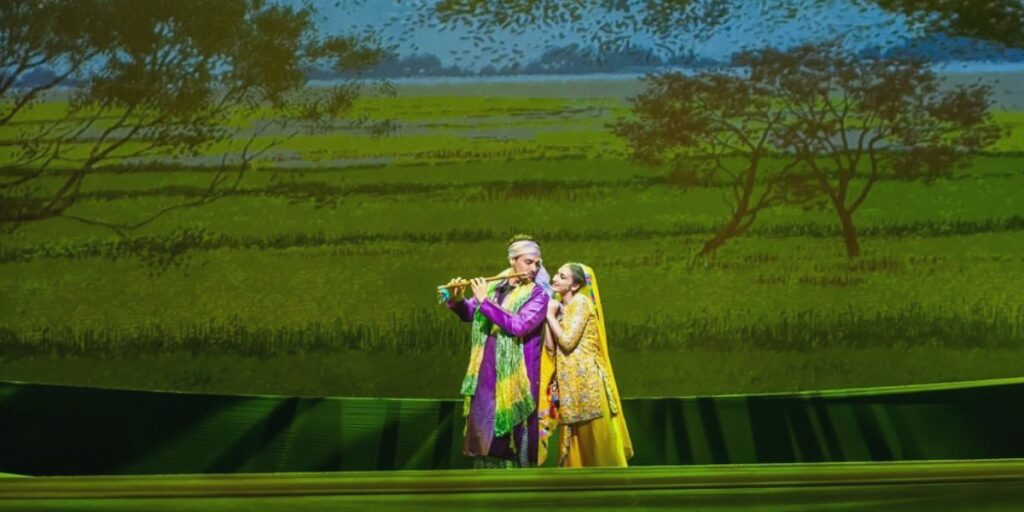Love, an emotion that transcends time, culture, and boundaries, finds its embodiment in the immortal tale of Heer Ranjha. This legendary love story, originating from the heartland of Punjab, has woven its way into the fabric of South Asian literature, folklore, and culture. Heer Ranjha, penned by the Sufi poet Waris Shah, is a saga that not only stands as a testament to the power of love but also explores the complexities of societal norms and human resilience.
Setting the Stage:
The narrative of Heer Ranjha unfolds against the backdrop of rural Punjab. Where the innocence of love clashes with the rigid structures of societal expectations. Heer, the epitome of beauty and grace, belongs to the Sayyal clan. While Ranjha, a handsome young man with a heart full of passion, hails from the Ranjha clan. Despite their different backgrounds, the two souls find themselves entwined in the threads of love. Challenging the norms that seek to keep them apart.
The Forbidden Love:
Heer Ranjha’s love story is marked by the theme of forbidden love. Where societal norms and familial expectations become formidable barriers. Heer promised to another in an arranged marriage, and Ranjha. Estranged from his family due to property disputes, faces insurmountable odds. The tale navigates through their journey as they strive to be together, defying the conventions that seek to separate them.
Waris Shah’s Rendition:
Waris Shah, the revered Sufi poet, undertook the monumental task of immortalizing this love story in his epic poem, ‘Heer. His poetic rendition not only captures the essence of Heer and Ranjha’s love but also delves into the societal issues of his time. Through his verses, Waris Shah raises questions about the role of societal structures. And the shackles they impose on individuals seeking love and happiness.
Symbolism and Allegory:
Beyond its surface narrative, Heer Ranjha is laden with symbolism and allegory. Heer, often portrayed as the metaphorical representation of the human soul, yearns for union with her true love, Ranjha, symbolizing the eternal quest for spiritual fulfillment. The obstacles they face and the sacrifices they make become allegories for the challenges encountered on the path to self-realization and enlightenment.
Heer’s Tragic End:
The climax of Heer Ranjha is marked by tragedy, adding a layer of poignancy to the narrative. Heer’s untimely death and Ranjha’s relentless pursuit of justice serve as a powerful commentary on the consequences of societal oppression. Waris Shah, through his poignant verses, highlights the bitter reality that love. When faced with societal hostility, often leads to heartbreak and tragedy.
Legacy and Adaptations:
Heer Ranjha’s influence extends beyond the written word, manifesting in various art forms and adaptations. The story has been adapted into numerous plays, films, and songs, resonating with audiences across generations. Each rendition breathes new life into the timeless tale, keeping the spirit of Heer Ranjha alive in the hearts of people.
Conclusion:
Heer Ranjha, a love story that has stood the test of time, continues to captivate hearts and minds with its timeless allure. Beyond its romantic elements, the saga addresses societal issues, making it a poignant commentary on the human condition. As we immerse ourselves in the verses of Waris Shah and the adaptations that follow. The enduring legacy of Heer Ranjha reminds us that love, in all its purity and defiance, is a force that can transcend the limitations imposed by society and time.




